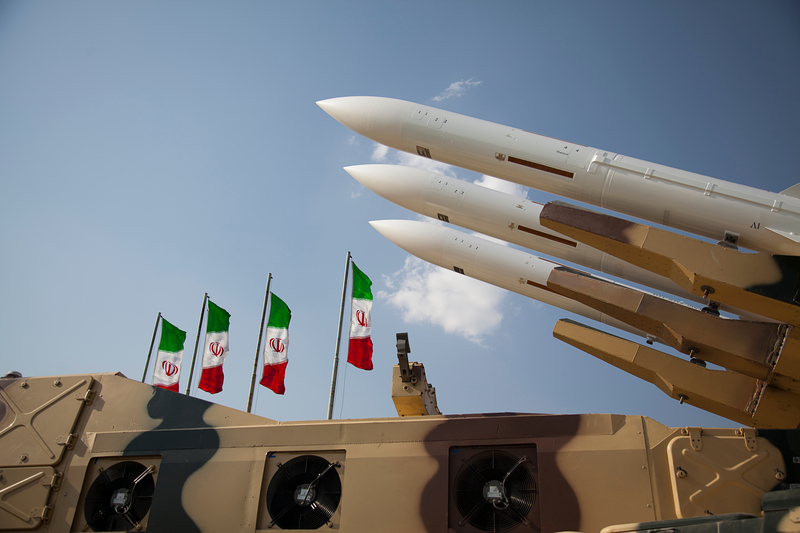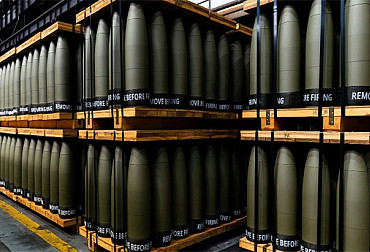Do not underestimate the capabilities of Iranian missiles
Iran is a long-term supporter of militias and terrorist organisations around the world. It has also the capability to deliver various missiles throughout the Middle East. Recently, Iran has supported the Hamas terrorist organisation in its terrorist activities against Israel.

The Iranian regime openly declares that the Israeli ground invasion and the ongoing air campaign against Hamas targets in the Gaza Strip will trigger attacks in the region. The US is moving additional naval and air units to the region as a show of force to deter Iran from further attacks in the region. Unfortunately, Iran has a wide spectrum of weapons, mainly missiles, at its disposal that could be handed over militias in Iraq, Syria, or Yemen, as well as to Hezbollah and Lebanon. The capabilities of those missiles as well as the potential proliferation to other countries, including Russia,should not be underestimated for two main reasons. First, Iranian ballistic missiles could improve and widen Russian capabilities to hit targets in Ukraine. Second, Iranian missiles could test US Air and Missile Defence capabilities in the region, and those lessons could be learnt not only by Iran itself but also by Russia, China, and even North Korea.
Iran has a wide spectrum of ballistic missiles, land-attack cruise missiles, and anti-ship cruise missiles at its disposal. For instance, the Iranian régime operates Short Range Ballistic Missiles (SRBMs) capable of hitting targets up to 900 km away. Iran fields both liquid-propellant and solid-propellant SRBMs with advanced homing technologies. With SRBMs launched from Iranian soil, the Iranian Revolutionary Guards Corps (IRGC) could threaten US military installations in the Persian Gulf. If launched by Syrian or Iraqi militias, these missiles could strike Israel.
Iran also fields Medium Range Ballistic Misilles (MRBMs) that could threaten Israel and even Egypt if launched from the Iranian soil. Some types of MRBMs are equipped with maneuverable reentry vehicles. According to the US Defence Intelligence Agency, some of the Iranian MRBMs are derived from North Korean missiles. IRGC also fields Land-Attack Cruise Missiles with range up to 2000 km. Both SRBMs and MRBMs are road-mobile which further complicates possible tracking.
The IRGC Navy also covers the whole Persian Gulf with Anti-Ship Cruise Missiles (ASCMs) derived from the older Chinese types and Anti-Ship Ballistic Missiles with ranges up to 300 km.
Iran is also developing the infamous Shahed and Mohajer loitering munition and UAVs, respectively. Especially Mohajer drones could be deployed in both reconnaissance and strike roles. However, it is not clear whether Mohajer UAVs are resilient against sophisticated electronic warfare due to tough sanctions against Iran regime which complicate development of advanced electronics.
As mentioned above, Iran has a wide spectrum of short- to medium-range weapons to strike all kinds of targets throughout the region. For example, in September 2019, Iran launched a surprise attack against Saudi oil facilities in Abqaiq and Khurais. This attack shocked the world and stopped 5-7 % of the world's total daily oil production for several days. The satellite and other images showed great precision of this strike.
During its war in Ukraine, Russia is spending its arsenal - air- and ground-launched cruise missiles, ballistic missiles, and other valuable precision-guided weapons. Therefore, it is Iran that could support and supports Russian efforts with Shahed and Mohajer deliveries. In late 2022, journalist Barak Ravid from Axios wrote about possibility of Iranian ballistic missile deliveries to Russia. Initially, Iran was considering sending Zolfaghar ballistic missiles with a range ofup to 700 km and Fateh-110 with a range of up to 300 km. After a significant diplomatic and intelligence effort by Israel, Iran reportedly limited the range of missiles to 300 km fearing an international reaction under UN Security Council Resolution 2231.
To date, there is no publicly available information on Iranian missile deliveries to Russia or information from Ukraine on the deployment of such missiles. However, with dwindling stockpiles of precision-guided weapons, we cannot rule out the possibility of future Iranian deliveries to Russia. This development could lead to more casualties in Ukraine,and both Russia and Iran could test Iranian missiles against Western air defence systems such as Patriot or IRIS-T. As we can witness in the Middle East, Iranian missiles are a force to reckon with, and we should not underestimate the potential development.










